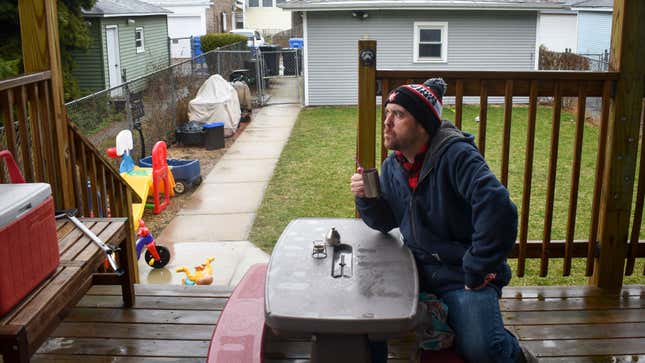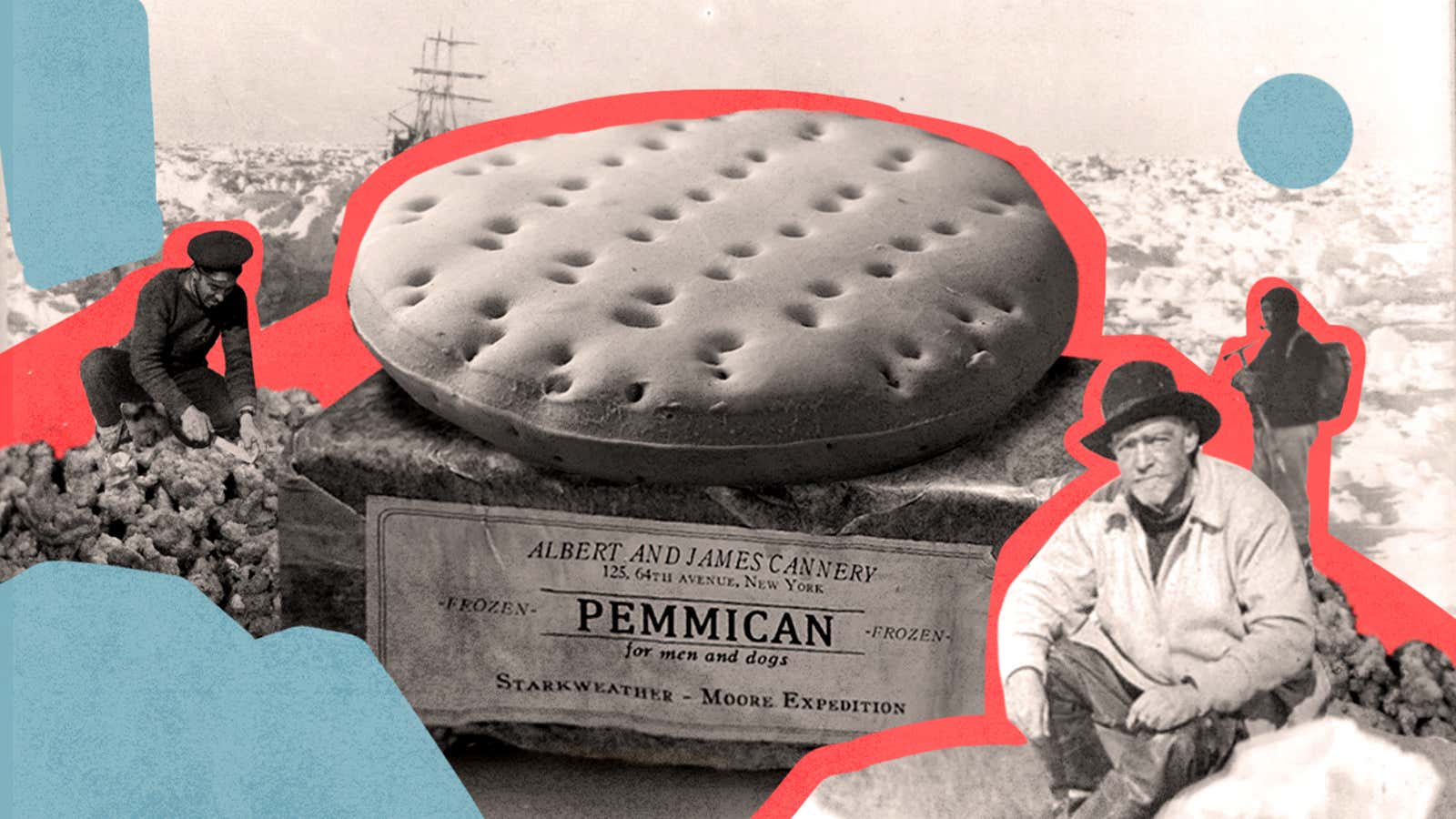If you’re like me, you’ve spent at least parts of the last couple of weeks animorphing into a nauseated ball of anxiety. It happens! It’s definitely okay not to be okay. And while I don’t necessarily have the solution to [gestures around at literally everything] this, I did turn some of that insomnia into a much-needed escapist project that I’d very much enjoy sharing with you.
So take a walk with me, won’t you, and subscribe to my primary thesis: Today’s polar explorers are soft. Weak. Swaddled in space fabric and sumptuously feasting upon freeze-dried science foods optimized to the unforgiving conditions.
My qualifications to make this judgment come entirely from watching a documentary on Shackleton, Amundsen, and the early Antarctic explorers in the early morning hours. (It’s what all of us thirty-COUGH-year-old dads tend toward by genetic law). Yes, it was 2 a.m., and I might have been a bourbon or two deep, but that shit was H A R R O W I N G.
What hooked me was the documentary’s view into the kind of preparation and planning that goes into feeding an expedition into the most unforgiving land on earth. It separates the Amundsens from the people you haven’t heard of because they never made it back. The centerpiece of the food-as-fuel picture was a thick hardtack-and-pemmican stew called hoosh.
And since I’m not exactly overbooked socially these days, I reached out to Jason C. Anthony, the man who actually wrote the book on hoosh, to learn further. It was, he confirmed, the absolute necessity of surviving Antarctica.
“Imagine planning an expedition across hundreds of miles of a lifeless continent which provides only (very cold) air to breathe and frozen water to drink. Everything has to come with you, because you’ll find nothing ahead of you,” Anthony said via email. “Low temperatures and the difficulty of traveling across snow and glaciers mean high demand by the body for calories, as well as an existential need for fuel to heat the food and melt the snow, both of which bump up very quickly against the limits of the human body to carry or drag weight over long distances. In other words, weight of food and fuel framed the planning.”
The successful polar expeditions weren’t reinventing the nutrition wheel, but rather largely adapting the ingenious preparations of Native Americans. Pemmican (adapted from a Cree term for animal fat) was a vital, calorie-packed foodstuff for indigenous people long before Europeans showed up, and it made its way to the European expedition class by way of the North American fur trade. It’s a mixture of dried meat (usually large game) and rendered fat mixed together, sometimes with dried berries, to form a dense, calorie-packed bar that can last for literal years. For those forging ahead on a relatively food-free continent, it was critical in fueling exploration.
“Pemmican was the only food source which could make [expeditions] happen, and was thus a prime mover of polar travel,” Anthony said. “The calorie requirement for the hardest polar sledging could be up to 10,000 [calories per day], though usually the hard days required about 6,500 — still more than the Tour de France, I think.”
Sounds great! Well, not so much “great” as “necessary.” Still fun. And, per Anthony, these aren’t necessarily hard and fast numbers.
“Generally the British expeditions provided each man 4,000 to 4,500 [calories per day]. Even modern adventurers have had trouble calculating the caloric needs,” he said. “I think it was Fiennes and Stroud ... who determined that the caloric deficit between what [explorers] burned and what they ate was the equivalent of what a normal person eats at home each day. In other words, they were starving.”
If this doesn’t bring home the absolute importance of hoosh, you’ve clearly never explored the Antarctic continent with a team of sled dogs in December 1911.

Let’s make some hoosh
First—and we will not make exceptions to this—it is required to sing the traditional meal song of the early explorers. I have provided the lyrics below.
The working day was long
And the road is grinding on
And your body’s winding down again
The tribal fire’s here
And the circle speaks so near
And the simple truth so very much clearer
Who got the hoosh, baby
Who got the only sweetest thing in the world
Who got the love, who got the fresh-e-freshy
Who got the only sweetest thing in the world
Okay, now that you’re pumped up, let’s do this. First, make some hardtack that’s going to last as long as you could want. It’s basically a cracker that hates you and everyone you’ve ever met.
- 12 1/2 oz. all-purpose flour
- 2 tsp. salt
- 1 cup water
- Preheat your oven to 375 degrees with a rack placed in the center position.
- Mix the flour and salt, make a well in the center, and add the water while continuously mixing.
- Mix until you form a dough. The important part here is making a consistent dough ball that doesn’t stick to your hands. Add flour or water as needed to hit the right mark.
- Roll the mixture out to 1/4" thickness, cut into 9 equal pieces, and pierce through each one several times with a skewer or chopstick (it should look like the hole matrix on a cracker).
- Bake half an hour at a time, flipping with tongs every 30 minutes, until just beyond golden brown. This can take 90 minutes to 2 hours, depending on your oven.
- Remove to a rack and let dry at room temperature for two days. Once they sound like a clacky piece of shuffleboard puck or a couple of dominos knocking together, you’ll know they’re good to go. Store in an airtight container or vacuum seal if you want to eat them a few presidential administrations from now.
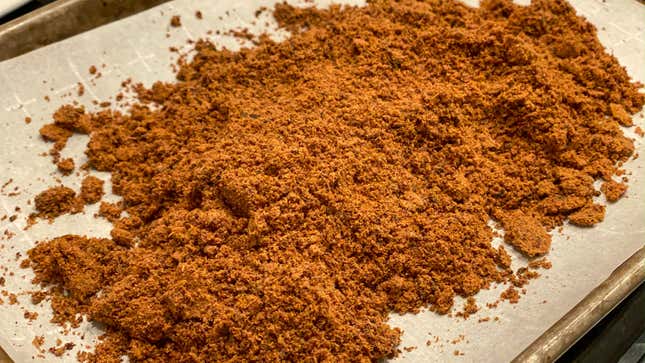
Next, let’s pemmican it up. You want to find meat as wide and flat as possible. Where I live, thin-cut bulgogi ribeye beef made the most sense. I salted 1.5 pounds of ribeye, smoked it over hardwood for an hour, then popped it into the oven at 170 degrees overnight to drive off as much moisture as I could. The important part, after that, is making what is basically meat dust. Use a blender, food processor, or whatever pulverizing equipment that’s handy. You’ll know when you make it right because you’ll think, “Oh dang, I have never treated beef in such a way.” It should resemble, in essence, dip tobacco made of meat. Wild!
The things that really separated Indigenous pemmican from mass-produced European stuff, per Anthony, was the gentle drying of meat, use of berries for flavor, and the absolute caution never to burn the animal fat. So with that in mind, I whipped up a pemmican consisting of:
- 185 grams dried meat
- 185 grams dried currants
- 185 grams rendered bison tallow
- Mix everything together in a bowl, working together the meat and the fat.
- When the mixture is just consistent enough to form up without feeling overly wet (kind of a dough vibe here), spread out into a 2-quart baking dish. Smooth the top, cover with plastic wrap, and refrigerate overnight.
- Remove the block of pemmican from the pan and cut into 5 equal 5-ounce bars.
How should it look/feel? Well:
“The early explorers usually described the texture [of pemmican] as dense and cheese-like. This was the industrial British/European pemmican, of course, which was different in substance (beef and beef fat rather than wild) and in shape (nice, tidy blocks in tins),” Anthony said. “Taste, assuming there are no dried berries or the like, would be like an unflavored, unsmoked jerky.”
Well, I know my mouth is watering. Who else is hungry?
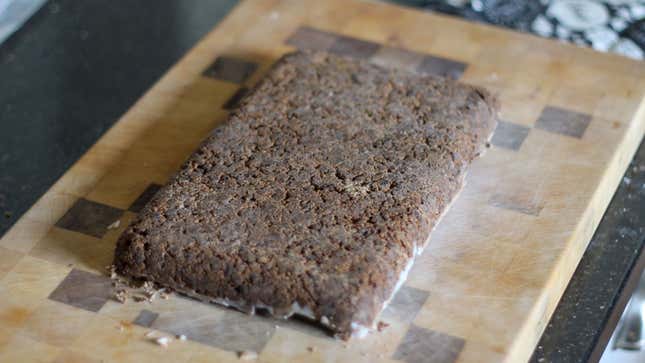
Snow!
The explorers used snow to turn their hardtack and pemmican into hoosh, but it’s like 40+ degrees every day by now in Chicago. Just use some water instead. In my late-night polar studies, I have learned that, in fact, snow becomes water above certain temperatures.
Hoosh! Hoosh! Hoosh! Hoosh! Hoosh! Hoosh!
Let’s bring the whole thing together.
- 2 oz. pemmican, broken up
- 2.5 oz. hardtack, smashed into bits (pliers can do this real well)
- 1/2 cup snow (you can use water, I won’t tell)
- Melt the snow (if you’ve got some bagged and properly dated snow) or heat the water to a simmer.
- Mix in the bits of hardtack and pemmican, stirring constantly, until everything is incorporated.
- Thin to desired texture with extra water and serve. Discover something—maybe about yourself!
Now you’ve got a hoosh going, baby! This is enough for a solid one-person meal. I used a teeny camp stove my dad gave me, as you can see. I believe it is for tea, but when in Home... I also employed the purple Froyo spoon made famous by Ernest Shackleton and Roald Amundsen. Historical veracity is important, people.
I took to the furthest destination that felt safe to test the result: my own backyard.
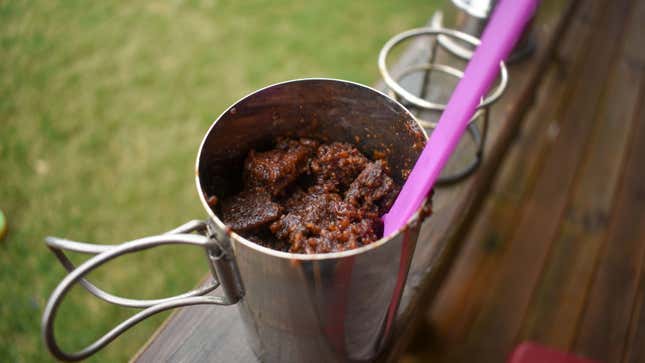
My wife reacted with “edible!” which is a lot more effusive than it sounds. She did not have high hopes for this project, as she sleeps soundly at night and is not a bourbon drinker. But even she considered this eminently consumable, and she’s not even wondering whether the icebreaker ship is ever coming back and if she’ll ever see the pastoral hills and dales of Yorkston-upon-Pennywhistle again.
My best description of the result is a chili that hits like Sonny Liston. The extended low-key drying and cooking contributes a lot of flavor to a dish that is basically beef, crackers, and fat. A little hot sauce and I could push this into any Bears tailgater I know. It’s certainly the tastiest survival rations I’ve come across.
So there, over the course of several days and many emails to an exceedingly patient editor, is how we bring the adventure and danger of the Antarctic into our kitchen. Now go explore some stuff, hopefully very nearby, and at an appropriate distance!
